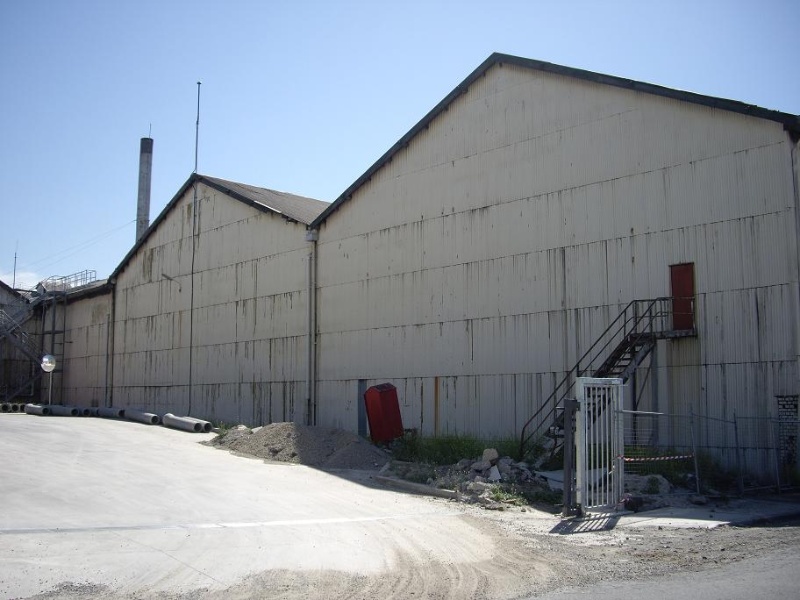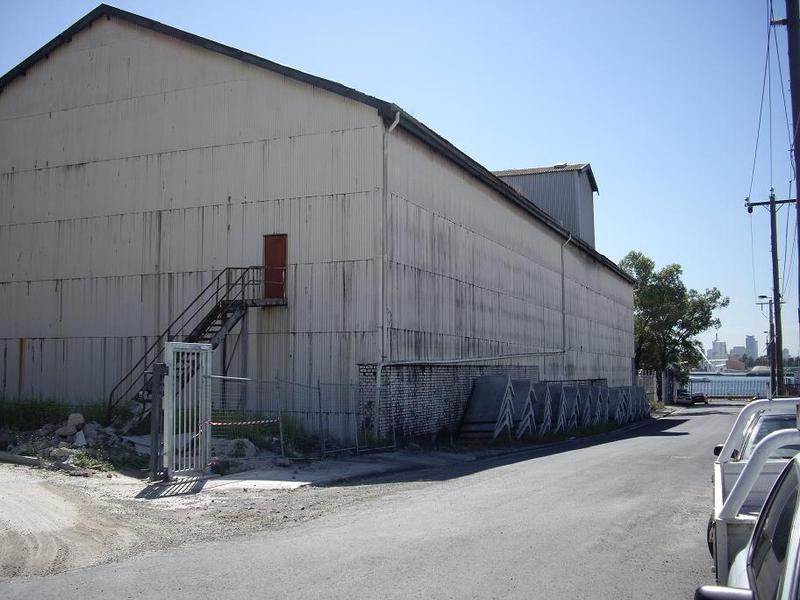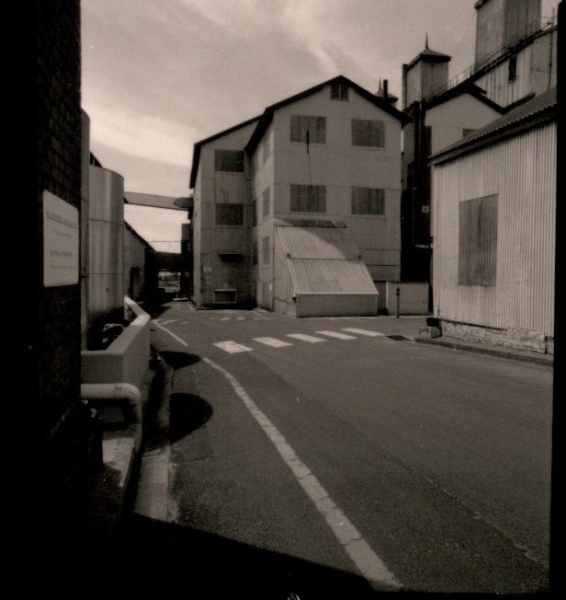CSR Yarraville
265 Whitehall Street, YARRAVILLE VIC 3013 - Property No 4098006000
-
Add to tour
You must log in to do that.
-
Share
-
Shortlist place
You must log in to do that.
- Download report




Statement of Significance
CSR Yarraville is of National historical and architectural significance as a unique example of the high point of late nineteenth century industrial design and one of the largest factories of the second half of the nineteenth century left in Australia. It is the oldest surviving sugar refinery, and the last intact of a series of refineries built in the period 1870 to 1890. The Yarraville Sugar Refinery was the largest industry in the Western region for much of the late 19th Century before the establishment of the Newport railway workshops. (Criterion A3)
This is born out by the value of £4000 (NAV) applied for rating by Footscray. This was 8 times any other property in the municipality. The Colonial Sugar Company was instrumental in developing the cane growing and sugar refining industry in Australia and the South Pacific and prominent in the employment of cheap labour first from the pacific Islands and in the 20th century, from Italy and Southern Europe. (Criterion A4)
The harsh working conditions experienced in the works, are still exemplified by the interior spaces of the pan house and char end, where years of charcoal dust and the effects of the heat of the processes are evident throughout. The company has operated as a virtual monopoly for much of its history and has long been one of the largest businesses in Australia. (Criterion D2)
The complex is a key element of the industrial landscape of the Lower Yarra. The buildings are an important local land mark, in particular the huge Edwardian turrets which feature decorative finials on a giant scale. (Criterion E1)
The refinery demonstrates both the 19th century development of industrial design and sophisticated large scale sugar processing equipment, and the progressive adaptation and development of these technologies to modern conditions. The Yarraville refinery retains (with modifications) the original refinery building of 1873 with a complex of processing, storage and office buildings dating from c.1900-10. All of these incorporate a cast iron prefabricated construction system similar to Foy & Gibson Collingwood. (Criterion F1)
Footscray Conservation Study SOS
Significance (preliminary)
Potentially of national significance as an early and extensive sugar refinery, possessing both architecturally interesting and mammoth (for the time) masonry structures. Of the early Footscray secondary industries, it is the largest and when established possibly the most far-reaching in terms of product marketing.
Australian Heritage Commission (AHC) criteria
The Australian Heritage Commission criteria consist of a set of eight criteria which cover social, aesthetic, scientific, and historic values. Each criterion has sub-criteria written specifically for cultural or natural values. The relevant criteria are:
A.3 richness and diversity of cultural features
A.4 demonstrates well the course and pattern of history, important historic events
D.2 good example of type
E.1 aesthetic importance to the community or cultural group
F.1 design or technological achievement .
-
-
CSR Yarraville - Physical Description 1
Viewed from across the river, the core of the 1873-5 refinery building (now the Pan House) is still visible, albeit since built over extensively. Much of the old machinery also survives including the bone char reprocessing equipment in the 'Char End' and early cisterns and vacuum pans. Until recent years the CSR-manufactured Golden Syrup packing machine was still in use.
Part of the post-1870s building includes the former Melt House later Char End, a distinctive three-towered structure clad with corrugated iron, which provides a picturesque skyline view (the original melt house was reconstructed as the char house, cl900). The earlier boiler room building on the north side of the Pan House survives as a series of bluestone walls with arched openings, and some surviving roof trusses.
Other 19th Century buildings are evident in the complex, some brick, others like the vast packing shed, corrugated iron-clad. A detailed conservation analysis was conducted by Allom Lovell & Associates in 1992.
Much of the works from the early 20th century period survives. The original 1874 refinery building has been stripped internally and the east wall has been replaced with a glass and steel wall during the 1950s when new refining equipment was installed but the basic structure is intact. Several buildings from 1900-10 survive relatively intact including the sack store and sewing building, the pan house and the boiling house, now converted to the engineering department. The char house is exceptional for its completeness, its possibly patented prefabricated iron construction system and the original charcoal plant. The Power-house survives intact with several generators and steam engines, and has been partly converted to a site museum.
The precise locations of some of the components of the complex are shown on plans of 1956. These include a large raw sugar store, in the north-east corner of the site, adjoining the refined sugar store, packing station, melting house and carbo (char) station along its southern perimeter; the packing station being part of the 1870s section. South of these were: the customs-house, south char end, jelly house, the main refinery, packing station and tinsmiths shop (fronting the wharf). The boiler house (also on the 1877 plan), coal bin and crusher, power house, and cooperage adjoined to the south. On the western perimeter were the bag store (north) materials store, engineers shop and offices.
Buildings of primary or contributory significance's are as follows:
No. Building Name
1 Drier Station
2 North Char End
3 Pan House
4 South Char End
5 Cistern House
6 Refined Sugar Store
7 Retail Packing Station
9 Raw Sugar Store
11 Boiler Station
Chimney Stack
13 Workshop
14 Bag Store
16 Engineer's Store
17 Former Melt House
18 Carbonatation Station
19 Refined Sugar Store
22 Golden Syrup and Treacle Packing Store
25 Former Power House
26 Transporters
27 Raw Sugar Store
33 Truck Area
43 Meeting Room
46 Conveyor System
Travelling Crane
Wharf (in PMC area)CSR Yarraville - Physical Conditions
Most buildings are in good condition, although the char end, having been decommissioned has not been maintained in recent years.
CSR Yarraville - Integrity
The site has a high level of integrity, although representing the on-going process of change in equipment and process which is part of the industry. The bulk of buildings for the 1870s to 1920 period survive, although some, such as the melting house, have been converted to other uses, in this case the engineers offices.
CSR Yarraville - Historical Australian Themes
Thematic context
Australian Principal Theme Manufacturing and Processing
PAHT Subtheme: Manufacturing and Processing
Local Theme Industry by the River: EarlyCSR Yarraville - Physical Description 3
Creation date(s): 1873
Heritage Significance national
Map (Melway) 42 C9
Boundary description
The extent of the current allotment. Buildings of specific significance are confined to the eastern half of the site and identified as primary and secondary (contributory) significance in the Allom Lovell Conservation Management Plan..
Local Government Area: City of Maribyrnong
Ownership Type PrivateCSR Yarraville - Physical Description 4
Additional Report from: Maribyrnong Industrial Heritage Places, Panel Report, Amendment C31, May 2004, Gary Vines
1.1 CSR YarravilleHO 183, HO 75 Submission 40
A further site inspection was provided to Council staff and the consultant by Sugar Australia, and Allom Lovell & Associates have continued to provide advice on heritage management to the owners of the site. Allom Lovell prepared a conservation analysis for the site in 1992.
The Allom Lovell submission argues that the heritage issues on the site should be dealt with at the state level where the economic considerations can be taken into account. The proposed overlay is questioned in terms of its effect on Sugar Australia's ability to upgrade. It refers to the original Historic Buildings Council registration process noting the determination that buildings of primary significance were appropriate for inclusion on the state register (now the VHR).
While the listing on the Victorian Heritage Register may properly be confined to the buildings of primary significance, this does not preclude other buildings on the site of local or contributory significance being included in the Heritage Overlay. The two would seem logically to compliment each other.
Another aspect of the Allom Lovell submission is that the owners require "uninterrupted operation of the refinery" which was provided in permit exemptions. If provisions can be made for such permit exemptions by Heritage Victoria, then appropriate measures could be implemented under the Heritage Overlay, such as the use of an incorporated plan. Such issues as operational requirements can also be dealt with through the normal permit process.
Sugar Australia refers to plans for developing the Yarraville Site and the potential for the Heritage Overlay to impact on these plans (Allom Lovell/Sugar Australia submission Appendix A). It states that Heritage restrictions would ".fundamentally impact on the company's ability to pursue its current objectives on the Yarraville Site" and refers to the construction of a new refinery ".rendering almost all the existing buildings redundant and requiring several to be demolished."
Both the Heritage Victoria registration and the proposed Heritage Overlay would aim to ensure that the heritage values of the site are fully addressed in any plans for demolition, and that other avenues are explored before demolition is permitted. While this may also be Sugar Australia's current objective, without the overlay, there would be no mechanism to address the conservation of the non-registered buildings if the owners were to change their approach to managing the site. Despite the current plans, there is always a possibility that things will change, either because of other economic, political, planning or business decisions. The site could one day be converted to other uses.
The wording of the submission suggests that some or all of the buildings are presently under threat. As far as any restriction goes, the only predetermined restriction from the application of the heritage overlay, is that the owners would be required to obtain a permit for the necessary changes, and this could be minimised through the application of an incorporated management plan.
The suggestion that the overlay is proposed to be extended over "fabric not of itself of particular significance" is spurious. It is the intention of Council that the Heritage Overlay is applied to the buildings and their curtilage identified as of secondary or contributory significance in the Allom Lovell report, and the overlay was drawn accordingly.
The submission goes on to suggest that the significance of the site is dependent on the continuation of refining on this site. While continuing use may contribute to significance, heritage controls cannot be applied to regulate uses or functions of a place (apart from permitting uses otherwise prohibited under other planning controls). Indeed, there seems to be a spurious argument in this, as heritage listing is by its nature focussed on the fabric of the site. If the whole of the historic fabric is lost to permit changes for continuing use, then the heritage significance of the site is also lost. The argument appears to be confusing heritage significance with economic significance.
The Allom Lovell submission comments specifically on the citation in the Maribyrnong Heritage Review, noting errors in dating specific parts of the complex, and confusion in the nomenclature used for various buildings. Differences in interpretation of fabric and significance do not substantially alter any conservation management objectives for the site.
Some of the specific issues raised by the Allom Lovell submission can be addressed as follows:
. If the Golden Syrup filling machine has been removed, was this done subject to a Heritage Victoria permit?
. Building identification - Nineteenth century contemporary accounts and original plans and drawings sighted and copied at CSR's Yarraville drawing office document different arrangements of the site to the current layout and building names. This is reflected in the history. For example, it is believed that the original 1870s melt house was located where the char end now stands.
. Attribution of dates to specific buildings was based on the original plans at CSR, historical accounts and photographs, as well as the Allom Lovell conservation plan. At one stage in the period 1900-1915 there were four turrets, and a c 1900-10 photo shows only two turrets.
. The "Packing Shed" refers the large gabled timber-truss roofed Building 6 along the north side of the site. Other buildings proposed for inclusion in the overlay are:
No. Building Name
1 Drier Station
2 North Char End
3 Pan House
4 South Char End
5 Cistern House
6 Refined Sugar Store
7 Retail Packing Station
9 Raw Sugar Store
11 Boiler Station
Chimney Stack
13 Workshop
14 Bag Store
16 Engineer's Store
17 Former Melt House
18 Carbonation Station
19 Refined Sugar Store
22Golden Syrup and Treacle Packing Store
25 Former Power House
26 Transporters
27 Raw Sugar Store
33 Truck Area
43 Meeting Room
46 Conveyor System
Travelling Crane
Wharf (in PMC area). The CSR plans were the source of the Hyndman & Bates attribution and dating of the Char End and turrets to 1901 or later - Hence their description as Edwardian.
. In terms of the statement of significance, the claim that CSR was one of the largest factories of the second half of the nineteenth century can be argued in reference to only the remaining nineteenth century fabric. Apart from flourmills and warehouses there were very few multi-story industrial buildings in the 1870s, and none approaching the size of the 1873 Pan House.
. Custom manufacture of ironwork in Britain is clearly a form of prefabrication
. The comparative examples are relevant as examples of similar forms of construction, period, function and historical associations.
. The Allom Lovell submission also describes as "nonsensical" some elements of the Maribyrnong Heritage Review citation, such as the description of a sugar monopoly in Australia and the Pacific by CSR from the late 19th century, and the connection between the Yarraville works, the development of the sugar industry and exploitation of Kanaka and immigrant labour on the Queensland and Pacific Island cane fields. I believe these to be historical facts, which are documented in works such as E W Docker's The Blackbirders: A brutal history of the Kanaka slave-traders, 1970, A G Lowndes, South Pacific Enterprise, The Colonial Sugar Refinery Company Limited, 1956, and Burrows & Morton, The Cane Cutters, 1986). CSR's pre-eminent role in cane farming and sugar refining is acknowledged in the statements of significance by both Allom Lovell: ".instrumental in the development of cane growing and sugar refining in Australia"; and Heritage Victoria: ".CSR had a refining monopoly, which continued into the 20th century."
. The connection between CSR Yarraville and the Pacific and Queensland cane fields is as strong as say, the association between the Old Treasury and the gold rushes. The point of Criterion A4 is that Yarraville best represents the importance of the late nineteenth century sugar industry as its most substantial and significant, tangible physical evidence - ie historic fabric.
Where corrections have been needed, these have been dealt with in the amended report.
None of this changes the significance of the site or its components, and the Maribyrnong Heritage Review acknowledges the Allom Lovell & Associates Conservation Management Plan as an appropriate document for informing the management of the cultural heritage of the site.
The overlay covers the places identified in the Allom Lovell Report and on the Heritage Register. There are a couple of small structures within this area that may not be of significance, but there are also buildings outside it that are contemporary and of contributory value. Therefore the overlay is a good compromise already.
The proposed overlay mainly affects buildings and structures listed as significant in the Allom Lovell Conservation Analysis 1992. The overlay does not prevent the Conservation Analysis being used as a reference document for planning decisions.
Recommendation:
The Heritage Overlay should apply as proposed by Amendment C31 because:
. The place's significance has been researched and identified.
. The overlay only applies to the contributory elements of the site.
. The refinery's significance is demonstrated by the whole complex.
. Without the overlay applying, the complex as a whole may never be recorded.
. The planning permit process is the best way to deal with the redevelopment of the site because the impacts of any changes to the heritage significance of the place will be considered along with other objectives.
That the overlay be reduced to apply only to the significant components of the site, including contributory elements (Primary and Secondary Significance), according to the 1992 Allom Lovell & Associates Conservation Analysis. However, this would cause greater confusion in the management of the overlay so an inclusive boundary is preferable.
Heritage Study and Grading
Maribyrnong - Maribyrnong Heritage Review
Author: Jill Barnard, Graeme Butler, Francine Gilfedder & Gary Vines
Year: 2000
Grading:
-
-
-
-
-
SUN THEATRE
 Victorian Heritage Register H0679
Victorian Heritage Register H0679 -
STATE SAVINGS BANK
 Victorian Heritage Register H0723
Victorian Heritage Register H0723 -
CSR COMPLEX
 Victorian Heritage Register H1311
Victorian Heritage Register H1311
-
'Boonderoo', House and Outbuildings
 Greater Bendigo City
Greater Bendigo City -
'Riverslea' house
 Greater Bendigo City
Greater Bendigo City -
1 Adam Street
 Yarra City
Yarra City
-
-












